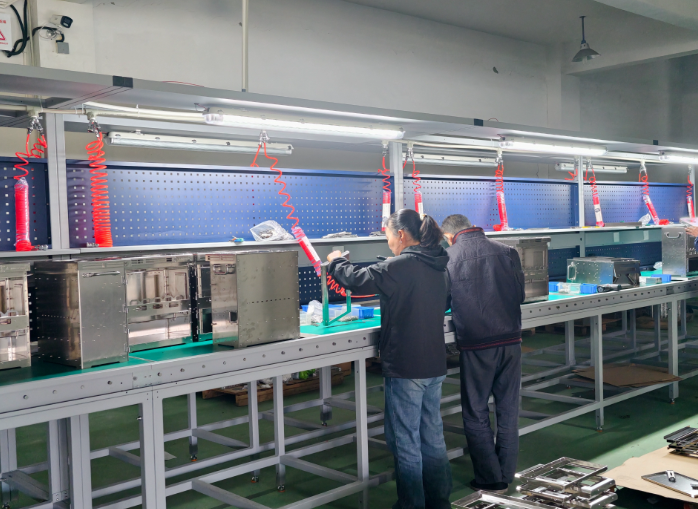In the textile and garment manufacturing industry, product quality is non-negotiable. Whether you are an apparel brand sourcing from global suppliers or a fabric mill exporting to international markets, the reputation of your business rests heavily on consistent quality. Fabric quality inspection is the foundation of that assurance. More than a mere step in the production process, fabric inspection is a strategic checkpoint that protects both buyer and seller from costly returns, reputational damage, and logistical disruptions. This article TOP International Inspection explores the full scope of fabric quality inspection: from its core objectives and inspection standards to techniques, defect classification, equipment used, and best practices. For sourcing managers, QA teams, and textile suppliers, understanding the essentials of fabric quality inspection is vital for maintaining product integrity and achieving compliance in global trade.
What Is Fabric Quality Inspection?

Fabric quality inspection is a systematic procedure aimed at ensuring textile materials—whether woven, knitted, or non-woven—meet both industry and buyer-defined standards. This process involves evaluating fabrics for visible defects, measuring physical dimensions, and testing performance attributes to ensure suitability for downstream processes like cutting, sewing, and garment assembly. A comprehensive inspection reduces risks of production delays, customer complaints, and reputational damage.
Inspections can take place at multiple stages of the supply chain:
-
Pre-production (Greige Fabric Inspection): Identifies defects in unfinished fabrics before dyeing or finishing, allowing mills to correct issues early.
-
In-line Inspection (During Production): Monitors fabric quality in real time to detect defects before large volumes are produced.
-
Post-production (Finished Fabric Inspection): Evaluates dyed or finished fabrics for compliance with final specifications.
-
Pre-shipment Inspection: Conducted just before delivery to confirm that the bulk order meets buyer requirements.
By implementing fabric quality inspection across these checkpoints, manufacturers and exporters can maintain consistent product quality and improve buyer confidence.
Why Fabric Quality Inspection Matters in Global Trade
1. Reduces Return Rates and Quality Complaints
In global trade, even minor defects can cause shipment rejections. By identifying issues such as color variations, weaving flaws, or oil stains at the source,fabric quality inspection helps suppliers avoid costly returns and protect profit margins. Early detection ensures fabrics are rectified or replaced before reaching international buyers, preventing disputes and safeguarding long-term business relationships.
2. Ensures Compliance With Buyer Specifications
Buyers often set detailed technical specifications covering GSM, shrinkage, tensile strength, and colorfastness. Comprehensive fabric quality inspection provides documented evidence that these requirements are met. This not only builds buyer trust but also reduces the likelihood of penalties, rework, or reputational harm in competitive export markets.
3. Supports Production Efficiency
When defective fabrics enter cutting and sewing, they create alignment issues, stitching problems, and higher scrap rates. By filtering out defective rolls through fabric quality inspection, manufacturers ensure smoother downstream production. This results in fewer machine stoppages, less rework, and reduced fabric wastage, ultimately lowering production costs and improving delivery timelines.
4. Enhances Brand Reputation
Brands thrive on consistency. A company known for reliable textiles gains repeat business and premium positioning in the market. Regular fabric quality inspectiondemonstrates a commitment to delivering quality products, which strengthens brand equity, builds consumer loyalty, and differentiates suppliers from competitors in the global marketplace.
Key Parameters Checked in Fabric Quality Inspection
Visual Aspects
Inspectors visually assess fabrics for aesthetic uniformity. This includes checking color consistency, spotting weaving or knitting faults like floats and holes, and identifying printing defects such as smearing or misregistration. Stains, oil marks, and selvage defects are also critical points of evaluation. Through detailed fabric quality inspection, suppliers ensure fabrics meet not only functional standards but also the visual appeal expected by end users.
Dimensional and Physical Properties
Measurements such as fabric width, GSM (weight), and thickness are taken to verify compliance with specifications. Inspectors also test tensile and tear strength, shrinkage percentage, skewness, and bowing. These attributes determine how fabrics behave during garment production. A rigorous fabric quality inspection guarantees that textiles retain their dimensional stability and strength across different applications, from apparel to upholstery.
Functional Characteristics
For performance-oriented fabrics, additional tests are essential.Fabric quality inspection may involve evaluating abrasion resistance, pilling tendency, air permeability, and moisture-wicking capabilities. In outdoor or sports textiles, waterproofing and breathability are crucial. Similarly, colorfastness tests against washing, rubbing, and light exposure ensure durability in consumer use. By assessing these parameters, manufacturers confirm that fabrics perform reliably in real-world applications.
Fabric quality inspection is not simply about catching defects—it's about protecting reputation, optimizing resources, and building trust in the global textile supply chain. For manufacturers, it enables better resource use and fewer reworks. For buyers, it ensures contractual compliance, timely delivery, and end-user satisfaction. As global standards for product excellence rise, incorporating a structured and professional fabric quality inspection process is no longer optional. It's a competitive advantage—one that reduces costs, increases transparency, and keeps brands ahead in a demanding marketplace. Whether you're a sourcing agent managing fabric rolls across Asia or a procurement manager evaluating mills in Turkey or India, integrating robust fabric quality inspection practices into your workflow will safeguard your bottom line and elevate product quality.
https://www.topinspection.net/Clothing-textiles.html
www.topinspection.net
TOP International Inspection Service Co., Ltd.

More Stories
Stop Calling It a “Sweatshop”! Future Factory Is Cooler Than You Think
Is an Online Tracking Service the Future of Smart Logistics?
Smart Factory Planning and Plant Layout for Future Manufacturing